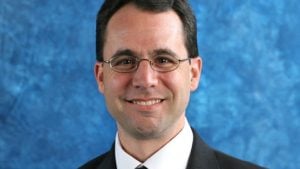A Legacy of Excellence
“Only a very small part of the actual knowledge content of a profession may be imparted to a university student. The main thing is to train the mind.”
Notable Accomplishments
-

1913-1915
Abel Wolman, one of JHU’s first engineering graduates, develops a water chlorination system that has provided millions of people with access to safe drinking water.
-

1950s
Professor Stanley Corrsin constructs a wind tunnel on the Homewood campus that led to landmark findings in the fundamentals of turbulence.
-

1957
Research by Dean, William Kouwenhoven, culminates in the creation of the closed-chest defibrillator and the development of CPR.
-

1967
Percey Pierre becomes the first African American in the U.S. to receive a doctoral degree in Electrical Engineering.
-

1993
Avi Rubin, a professor of computer science, reveals significant security flaws in Diebold electronic voting machines that make them vulnerable to hacking.
-

2009
Louis Whitcomb, a professor of mechanical engineering, develops the navigational software used to send an autonomous underwater vehicle to the bottom of the Mariana Trench.
-

2012
ChemBE professor, Sharon Gerecht, develops a hydrogel that can promote the formation of new blood vessels and hair follicles in skin damaged by severe burns.
-

2019
The “virtual heart” models developed by BME’s Natalia Trayanova’s are being used to diagnose and treat atrial fibrillation in the first FDA-approved clinical trial based on computer modeling.
2020 COVID-19 Map
A map that tracks the spread of COVID-19, created by CaSE’s Lauren Gardner, receives over a billion hits a day, making it the world’s leading information source for this data.
Johns Hopkins Science Review
Between 1948 and 1960, JHU produced an educational television series featuring world-renowned scientists and scientific “firsts.”

100 Gallons a Day, 1959 - Johns Hopkins scientists explore issues related to water consumption in the U.S.

Concrete with Muscles, 1954 - Johns Hopkins scientists and engineers explain the composition and uses of concrete and cement.

Tomorrow’s Careers - A discussion of career options for the men of the graduating class of 1956.








